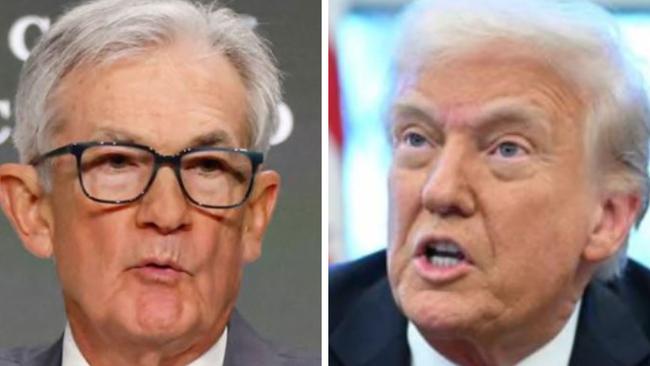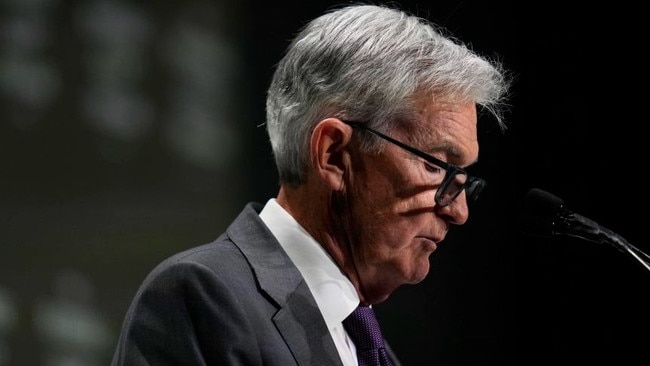Donald Trump has for months privately discussed firing Jerome Powell
In meetings at Mar-a-Lago, Trump has spoken with Kevin Warsh, a former Fed governor, about potentially firing Powell before his term ends and selecting Warsh to be his replacement.

President Trump has for months privately discussed firing Federal Reserve Chair Jerome Powell, according to people familiar with the matter, but he hasn’t made a final decision about whether to try to oust him before his term ends next year.
In meetings at the president’s private Florida club, Mar-a-Lago, Trump has spoken with Kevin Warsh, a former Fed governor, about potentially firing Powell before his term ends and possibly selecting Warsh to be his replacement, the people said.
Warsh has advised against firing Powell and has argued that he should let the Fed chair complete his term without interference, according to the people. The conversations with Warsh carried into February, while others close to the president have spoken to Trump about firing Powell as recently as early March, the people said.
At a meeting in the Oval Office on Thursday, Trump expressed confidence that he had the authority to oust Powell. “If I want him out, he’ll be out of there real fast, believe me,” Trump said. The president added that he is “not happy” with Powell and accused him of “playing politics” with interest rates.
Any effort by Trump to fire Powell would almost certainly end up before the Supreme Court. It could leave a cloud of scrutiny over Powell’s ultimate replacement, and any prospect that the Fed chair could be sacked over a policy dispute would likely tank financial markets.
The White House declined to comment. Warsh didn’t respond to requests for comment.
Trump’s advisers don’t agree themselves over how far the president should go, and it remains unclear if the president will move to fire Powell.

Inside the White House, Treasury Secretary Scott Bessent has consistently pushed back against Trump advisers who want to replace Powell, arguing that doing so would provide little benefit relative to the high potential cost. This week, he referred to the Fed’s independence on monetary policy as a “jewel box” that the U.S. should never compromise.
Bessent said the White House would begin interviewing candidates for Fed chair this northern autumn, around six months before Powell’s term ends. For his part, several people who have spoken to Warsh in the past year said Warsh gave the impression that the Fed job had all but been offered to him once Powell’s term expires.
Other advisers have been spoiling for a fight and seeking ways to challenge Powell more directly. They think the central bank and its backers in Washington and on Wall Street have exalted the Fed’s independence to a degree that isn’t supported by constitutional law and isn’t good for the economy.
Still, any argument against firing Powell hasn’t stopped Trump from making the case to allies in private meetings that the Fed chair should lose his job and that the Fed’s governing law, which says policymakers can only be removed “for cause,” isn’t strong enough to hold up in court if he sought to remove Powell.
Whether the Fed chair can be removed before the end of a four-year term is an open question because it has never been attempted. Trump has previously acknowledged that the law isn’t clear about this. During Trump’s first term, “I was threatening to terminate him,” Trump said of Powell in October. “There was a question as to whether or not you could.”
Trump is trying to dismiss several Biden administration appointees who have challenged their removal by citing a 90-year legal precedent that has shielded them from dismissal over a policy dispute.
The Justice Department has said it wants to overturn the landmark 1935 legal precedent that has provided that legal protection.
Legal scholars have said the Supreme Court ruling, which unanimously held that then-President Franklin Roosevelt lacked the authority to fire a commissioner at the Federal Trade Commission, offers the strongest legal guardrail to back up Fed independence.
Some White House officials have been watching to see whether the Supreme Court overturns the case, known as “Humphrey’s Executor,” as they consider the president’s next steps on Powell.
Powell said Wednesday he didn’t think that legal challenge, which concerns Trump’s removal of a member of the National Labor Relations Board, would ultimately apply to the Fed — presumably because the Supreme Court, even if it rolls back its 1935 ruling, would find a way to protect Fed governors from removal.
“It’s a situation we’re monitoring very carefully,” he said.
Trump interviewed Warsh for the Fed chair job in 2017 before choosing Powell, who became chair the following year. Warsh was an economic aide to President George W. Bush, who named him to the Fed board in 2006. Warsh played key roles liaising between Washington and Wall Street during the 2008 financial crisis and left the Fed in 2011.
Since leaving the Fed, Warsh has worked with billionaire investor Stanley Druckenmiller, who is also a confidant and longtime mentor of Bessent.
Trump earlier Thursday seemed to justify Powell’s ouster in a Truth Social post. Trump criticised Powell for what he views as not doing enough to quickly lower interest rates. “Powell’s termination cannot come fast enough!” Trump wrote.
The Fed has guarded its independence to set monetary policy ever since the high inflation of the 1970s. President Richard Nixon privately pressured his Fed chairman and former adviser, Arthur Burns, to ease policy ahead of the 1972 election, according to Oval Office recordings. Burns acceded.
After years of high inflation were cured by a punishing recession in the early 1980s, the Fed and other central banks around the world sought and were granted considerable operational autonomy, or “independence,” by their governments to set interest rates with an eye toward the long-run good of the economy. Central bank independence also insulates politicians from taking the blame for unpopular steps to corral inflation.
Many investors in the U.S. and abroad regard the independence of the Fed as sacrosanct in fostering lower inflation and, consequently, less risk in holding longer-term government debt. Yields on long-term government debt could rise if investors worried that the central bank would take a more relaxed approach to inflation.
Powell made clear to the administration six years ago that he would fight his removal in court, and his public comments recently suggest his position hasn’t changed.
Back then, Fed leaders decided that if Powell’s status as chair of the Fed’s board was called into question, the central bank’s separate interest-rate setting body, the Federal Open Market Committee, would close ranks by meeting to immediately re-elect Powell as its chair.
The FOMC is composed of the Fed’s seven Washington-based governors and a rotating group of presidents from the 12 Fed banks, which are quasi-private institutions. The Fed’s regional bank presidents are appointed not by the president but by the bank’s directors, who are generally local business or non-profit executives. The FOMC elects its own chair at its first meeting of the year.
The upshot is that attempting to remove Powell would provide little practical benefit because Powell likely would continue to lead the institution until any litigation is resolved, which could extend beyond Powell’s term.
The Wall St Journal



To join the conversation, please log in. Don't have an account? Register
Join the conversation, you are commenting as Logout